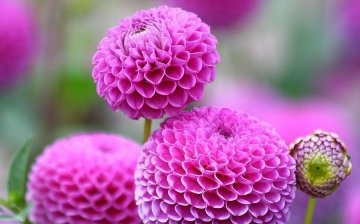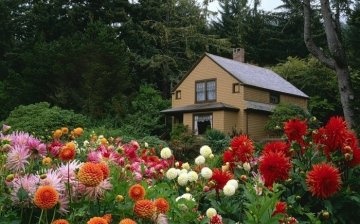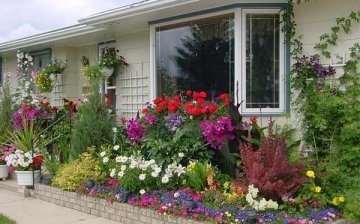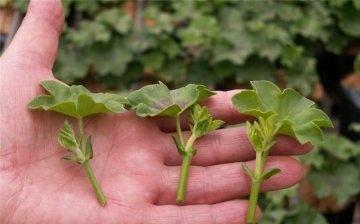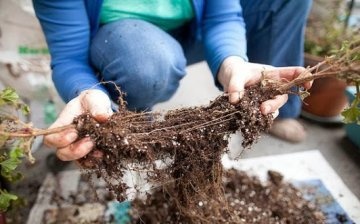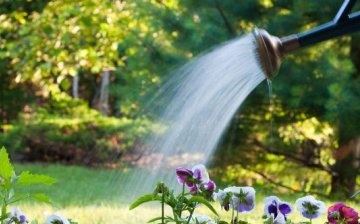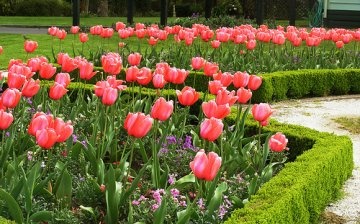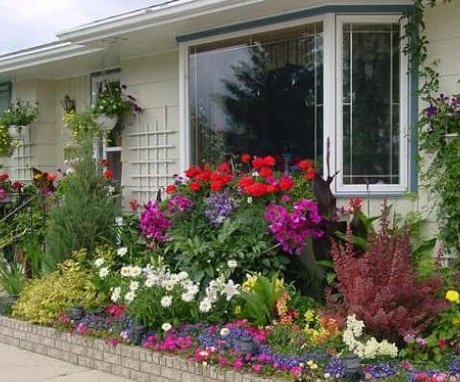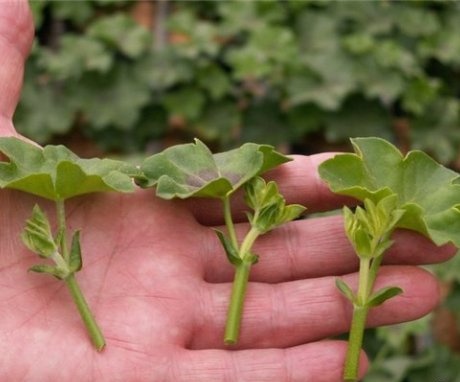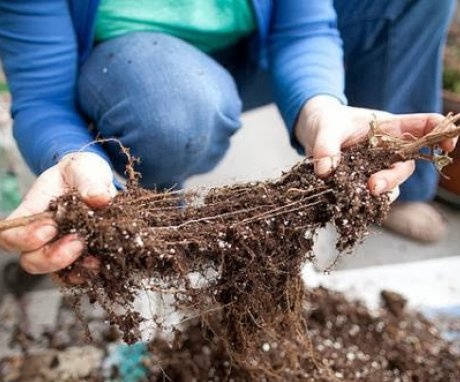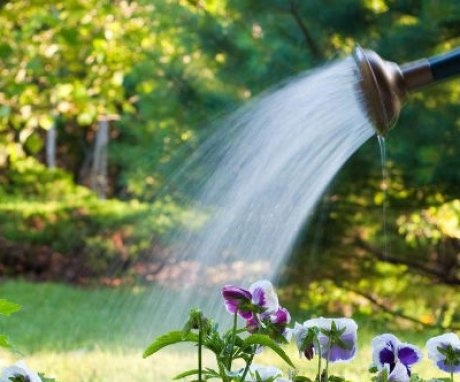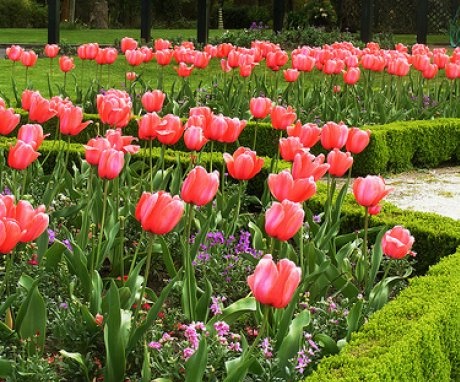Perennials in the country - types and rules for growing flowers
Growing perennial plants in garden plots is an excellent solution for lovers of comfort and beauty. With relatively little financial and labor costs, you can create magnificent flower arrangements, decorate gazebos, hedges and walls of buildings. Of the great crowd perennials you can choose the most beautiful plants for any idea.
Content:
- Perennials for giving - the best types and description
- Reproduction of perennials
- Correct care
- Tips for decorating flower beds
Perennials for giving - the best types and description
Perennial plants are crops that can grow in one place without transplants more than two years. By type of formation root system perennials are divided into:
- Bulbous
- Tuber-bulbous
- Rhizome
- Tuberous
Bulbous plants make up a large group of perennials, which include tulips, daffodils, lilies, crocuses, hyacinths, muscari. Among all the variety of perennial plants, the most unpretentious and viable are the bulbous ones. They are able to withstand even the harsh climate of the Siberian regions.
By the time of flowering, perennials can be conditionally divided into three groups: those that bloom in spring and those that bloom in summer and autumn.
The group of flowers that pleases gardeners in the spring include:
- Crocuses - low bulbous plants with beautiful flowers of various shades. They are rightfully considered the messengers of spring, since they begin to bloom at a time when even the weeds are still "sleeping". There are over 300 types crocuses, it is noteworthy that some of them can even be used as spices.
- Hyacinths - one of the first to bloom in spring, flowers are formed at the top of the stem in the form of long inflorescences-brushes, which are densely decorated with flowers. Refers to the genus of bulbous plants. The cultivation of hyacinths has its own characteristics, which are important to consider when leaving.
- Daffodils are one of the most beautiful plants with delicate flowers. Period flowering usually 20 days. Depending on the variety, the flowers are simple or double. Basically, the daffodil blooms in April-May, but there are also medium-late and late-blooming ones.
- Tulips - bloom all spring until early summer, this is perhaps one of the most common representatives of the bulbous family on flower beds... Currently, there are more than 3,500 varieties of tulips, which have different shapes and shades of flowers. Tulip care consists in watering, loosening and feeding mineral fertilizers... This plant does not require any special conditions for growing.
- Periwinkle - it is believed that this flower has magical protective properties, attracts love and prosperity to the house. Caring for it will not be difficult even for novice florists, the plant grows quickly and covers the soil with a colorful carpet, develops well in the sun, in partial shade and even in the shade.
Perennials with summer flowering:
- Day-lily - a rhizome plant with orange, red-brown, yellow flowers, collected in inflorescences. The height of the daylily depends on the variety and ranges from 30 cm to one meter. Period flowering from 20 to 30 days, the plant is resistant to diseases and pests, to drought and waterlogging. Flowers acquire the greatest beauty in well-lit, sunny areas.
- the Rose rightfully bears the title of the queen of summer, breaks all records in the variety of varieties and colors of flowers. In garden plots, hybrid tea, climbing, park roses and floribunda. It is widely believed that a rose is very difficult to grow, in fact, you just need to follow the rules of propagation and choose a site for planting correctly.
- Cotoneaster - absolutely undemanding to care and frost-resistant bush with small dark green leaves, which become reddish by autumn. Cotoneaster fruits resemble miniature apples. Can be used in single and thick plantings.
- Pansies are a biennial plant that is popular with both gardeners and breeders. The flowering time can be adjusted depending on the sowing of the seeds. Traditionally used to decorate borders, in floral geometric compositions, they look good as part of alpine slides.
- Pion - if the rose is the queen of summer, then the peony is undoubtedly the king. The plant, which has beautiful flowers with a delightful aroma, pleases with its flowering for 15-20 days. Different varieties have different flowering periods, so with the right approach in choosing a variety, you can enjoy the beauty of peonies throughout the summer.
- Phlox paniculata got its name from the shape of the inflorescences. It is widely used for decorating flower beds and various flower arrangements. Flowering is long and abundant, the plant is moisture-loving, but does not tolerate excess moisture.
There are a great many perennial plants flowering in the summer period: some more bright representatives of this family:
Bloom in autumn:
- Asters - a rhizome plant with flowers similar to stars, has about 500 species. Depending on the varieties, plant heights are used as part of flower beds, borders, group plantings, to decorate terraces and balconies.
- Autumn crocuses - they begin to bloom during the period of leaf fall, the flowering period is much shorter than that of spring ones, but against the background of withering plants they look especially impressive. Differences in growing this species from spring ones are only in different planting times, making fertilizers.
- Chrysanthemums - belong to the aster family and will decorate any site in the fall. There are about 650 varieties of chrysanthemums, differing in the shape and color of the flowers. It can grow in one place for five years, but experienced gardeners recommend replanting the plant every spring.
There is a separate group of perennials - climbing plants:
- Climbing rose - usually blooms once a year for a month, but there are varieties that bloom again. Inflorescences of small flowers of various colors do not exceed five centimeters in diameter. Scourges with small, stiff leaves need a support. The plant requires careful maintenance, especially in the first year.
- Wisteria - very beautiful deciduous liana, with a brush of flowers up to half a meter long, are extraordinarily beautiful. A very demanding plant for climatic conditions, although a wisteria variety has been developed in the USA that can withstand frosts down to -37 degrees.
- Maiden grapes - frost-resistant, unpretentious tree-like liana up to 20 meters long, thanks to special suction cups and antennae, it is fixed on almost any surface. Dense foliage changes its color with the onset of cold weather to red and purple shades.
- Honeysuckle - a genus of climbing shrubs, reaches a height of three meters, requires tying and regular pruning... Withstands frosts up to - 50 degrees. Beautiful yellow flowers exude a unique aroma.
Reproduction of perennials
Perennial flowers can be propagated in several ways:
- Seeds
- Cuttings
- By dividing
- Roots
- Bulbs
To get perennial seeds, do not cut flowers immediately after flowering. After collecting the seeds, they can be immediately sown in small pots, which in turn can be buried in the garden soil to the level of the soil in the pots and protected from frost. When sprouts appear in winter, the plants are brought into the room. The seeds of most perennials are stored in a dry place until spring, dried and laid out in sachets.
Plants such as sage, catnip, Iberian, it is better to propagate by cuttings.
Reproduction technology by cuttings:
- Cut off the top 5-10 centimeters long from young shoots of the plant with a sharp knife; from plants with soft stems, you can take the middle part. In some plants, the lower part of the stem is generally used.
- Plant the resulting cuttings in containers in the soil to a depth of one to two centimeters.
- Place in a warm room or place under a film on the site.
- Maintain high humidity, water and ventilate regularly.
- Three weeks after the roots appear, the plants need to be hardened by exposing them to the open air.
- After the hardening procedure, the plants can be planted in open ground.
Reproduction of perennials by division is not only the easiest way, but also one of the elements of caring for them. So that the plant does not lose its flowering intensity, it is recommended to divide it every time you transplant.
The division procedure is carried out after the plants have faded:
- Dig up the plant.
- Loosen the root ball gently.
- With a sharp knife, divide the lump into two parts so that each of them has a well-developed leafy rosette.
- Remove all peduncles, damaged roots and diseased leaves.
- Plant each part in the ground.
Some plants, for example, Turkish poppy, form shoot buds on the roots. This allows the plant to be propagated by root cuttings:
- Dig up the plant in winter.
- Separate the long roots and cut them into five centimeter pieces, making an oblique cut.
- Stick the resulting roots into the soil to seedlings.
- Sprinkle with a layer of expanded clay or sand.
- Cover with foil.
- Water regularly.
- After the sprouts appear, remove the film.
- The plant is ready for transplant.
A bulb is essentially a shortened shoot with a stem (bottom) and leaves (scales). All bulbous crops are propagated by children, they are easy to detect when digging the bulbs. The bulbs are planted to a depth equal to three of its diameter, roots down and watered abundantly.
It should be noted that the vegetative way breeding, unlike seed, allows you to preserve all the qualities of the mother plant and significantly reduces the time the perennial enters the flowering phase.
Correct care
Perennials do not require as much care as annuals. However, there are a number of rules landing and leavingthat must be observed.
Before planting plants, the soil must be prepared: dig up and, depending on the needs of a particular plant, apply fertilizers and correct the composition of the soil.
An important element of perennial care is regular watering, weeding and loosening of the soil.
For perennials with roots close to the surface, it is better not to loosen the soil, but mulch. Watering carried out only with warm water, especially, it is important to moisturize in drought. Top dressing during the season they are carried out several times: the first - immediately after the snow melts, then during the formation of buds, during and after flowering. Organic fertilizers in spring, mineral - from the moment of flowering.After September 20, perennial plants are not fed.
Most bulbous plants need to be dug up and dried in order for them to grow better, and then planted again in the fall. At the end flowering cut the flowers and wait for the leaves to dry out. Flowers need to be removed in order for the bulbs to receive more nutrition. The bulbs can then be dug out to dry.
Hyacinth bulbs need to "rest" for at least 90 days, that is, they are not recommended to be planted earlier than this period. Autumn perennials are recommended prune as low as possible, except for those planted in the autumn. Heat-loving plants are sheltered for the winter.
Tips for decorating flower beds
The flowering period of some perennial plants is not too long, therefore, when organizing a flower bed, it is important to choose flowers so that the opening buds of some cover the fading ones.
When organizing a flower bed, it is important to consider the size of the plants.
By height, perennials are classified into:
- Undersized
- Medium-sized
- Tall
- Curly
Low-growing plants are placed in the foreground, medium-sized and tall behind them. Low-growing plants are well suited for curbs or lawn carpeting. Tall perennial flowers can be used to decorate mono-flower beds or in combination with other plants, or as a background for mixborders. Climbing plants are mainly used to decorate vertical structures: hedges, walls or decorative structures.
When planning a flower bed, consider not only the period flowering and plant height, but also a combination of colors, and a very important aspect is the compatibility of perennials in terms of growing conditions: demanding light, humidity, the need for fertilizers.
More information can be found in the video.



